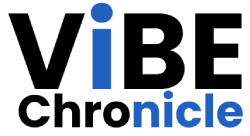Okay, so listen, if you’re running a business in 2025, or even just thinking about starting one up, you gotta get this “leads first” thing stuck in your head. It’s not some fancy new buzzword that’ll disappear next year. No, it’s just, like, how things really should be done, but a lot of folks kind of miss it. For a long time, companies would build their thing, right? Spend a ton of cash, make a product, then go, “Alright, now who’s gonna buy this?” That’s… backward. Plain and simple, that’s just a bad way to play the game.
What I’m talking about, this “leads first” approach, it’s kind of obvious when you think about it. It’s about focusing all your energy, your time, and especially your money, on finding out who actually wants what you’re selling before you go all-in on making the perfect widget or service. Or, if you already have a widget, it’s figuring out exactly who needs it, like, right now, and making sure you’re talking to them first. Sounds simple, but boy, do companies screw this up.
We’re past the days where you could just throw an ad up and hope for the best. Customers these days, they’re smart. They’re online, they research everything, and they’ve got options coming out their ears. So if you’re not thinking about them, like, from the absolute jump, you’re just wasting your breath. It’s kinda like trying to sell ice to an Eskimo, if you don’t even know if they’re thirsty.
Why Leads First Just Makes Sense for Your Business Strategy
First off, it’s about not bleeding money. Seriously. How many businesses do you know, maybe even yours, spent a gazillion dollars on developing some new feature or a whole new product, only to find out nobody really cared? Yeah, exactly. Lots. When you go leads first, you’re basically saying, “Hey, before I commit to building this whole house, let’s see if anyone even wants to live in this neighborhood.” You’re testing the water. You’re asking around. It’s like, instead of building a whole amusement park and hoping kids show up, you ask a bunch of kids what kind of rides they like first. Then, maybe you build a couple of those, see how it goes, and then decide on the roller coaster.
It changes everything, doesn’t it? Your whole product roadmap, your marketing spend, even who you hire – it all gets dictated by actual, real people who show some interest, instead of some big boss’s gut feeling.
Money Stays in Your Pocket (Mostly)
Think about it: fewer wasted marketing campaigns. You know those big, splashy ads that cost a fortune and bring in… crickets? Yeah, those are often because the company didn’t properly figure out who their leads were before they started shouting into the void. If you know your target audience, because you’ve been cultivating those leads, you know where they hang out online, what they read, what their problems are. So, you can put your ads right in front of them. It’s a huge difference. You’re not just throwing darts at a board; you’re aiming for the bullseye. That means your ad dollars work way harder.
Also, product development gets way more efficient. Instead of guess-what-they-want, it becomes know-what-they-need. Imagine, your engineers or your service designers, they’re not just making stuff up. They’re building things that actual potential customers have said, “Man, I wish someone would make X” or “My biggest headache is Y.” That feedback, that initial interest from leads, it’s like a secret cheat code for making products people actually want to pay for. And you know what that means? Less money spent on making things that flop.
Better Customer Relationships, From the Get-Go
When you start with leads, you’re not just looking for a transaction. You’re starting a conversation. Someone expresses interest, even just a little, and you’re there to respond, to ask questions, to learn. It’s not a sales pitch right away. It’s more like, “Hey, I noticed you looked at our stuff about tricky customer service issues. What’s bugging you most about that right now?” This kind of interaction, it starts building trust. And trust? That’s gold in business.
People stick with companies they trust. They tell their friends. It’s way easier to sell to someone who already feels like you get them and their problems than to a total stranger you’re cold-calling. It sets up a relationship where they feel heard, where they feel like you’re actually trying to help, not just sell. And when they finally do buy, it’s not just a sale; it’s a connection. That means repeat business, baby. That means testimonials. That means organic growth, which is the best kind.
What Leads First Actually Looks Like in Real Life
It’s not just about getting emails. Sometimes, it’s simpler than that. Say you’re launching a new online course. Instead of just building the whole thing, spending months making videos and workbooks, you could set up a landing page saying, “Hey, thinking of doing a course on [this super specific thing]. If you’re interested, pop your email in here, and tell me what your biggest struggle is with [super specific thing].”
Then, you promote that page. Maybe run a few cheap ads, post in some relevant groups. If a bunch of people sign up and tell you their problems, boom! You’ve got leads. You’ve got validation. You’ve got direction. And you know what’s cool? You can even email those folks, asking them more questions, maybe even invite them to a small online group to chat. This is all before you write a single lesson. So smart, right? It just makes sense.
Getting a Leg Up on the Competition
Alright, picture this: two businesses, same market. One is just building stuff and pushing it out. The other one? They’re all about leads first. They’re constantly talking to potential customers, understanding their shifting needs, spotting new trends because their leads are telling them. Who do you think is going to adapt faster? Who’s going to be first to market with the thing people actually want next? The leads-first crew, obviously.
They’re like a step ahead, always. While the other guys are still trying to guess, the leads-first businesses are already getting feedback, tweaking their things, and getting ready for the next wave. It’s like having a crystal ball, but it’s powered by real human wants and needs.
Things You Gotta Do to Make Leads First Work
So, how do you actually do this? It’s not just waving a magic wand. There are some basic things that need to be locked in place.
Be Patient, But Also Quick: It’s not an overnight thing. Getting good leads takes time and effort. But once someone expresses interest, you gotta be pretty quick to respond. No one likes being left hanging.
Listen, Really Listen: This ain’t about talking at people. It’s about asking questions and then shutting up and listening to the answers. That’s where the real gold is. People will tell you what they need if you just give them a chance.
Give Stuff Away: Not like, your whole business. But offer something for free that helps them, even a little. A quick guide, a checklist, a free consultation. Something that gets their name and email, but also gives them a taste of your helpfulness. This is your magnet.
Keep the Conversation Going: Once you have a lead, don’t just let them sit there. Send them useful info. Share your thoughts on things related to their problems. Stay in touch without being annoying.
Track What Works (and What Doesn’t): Are most of your leads coming from social media? From an online ad? A blog post? Pay attention to where the good ones are coming from so you can do more of that. And if something isn’t working, well, stop doing it.
It’s a Mindset Shift, Not Just a Tactic
This isn’t just another marketing tactic you bolt on. It really is a shift in how you think about your whole business. It’s putting the potential customer – their needs, their questions, their problems – right at the very heart of everything. And when you do that, when you genuinely try to help people and solve their actual problems, good things just tend to happen. Your business grows, you make better stuff, and honestly, it’s probably a lot more satisfying than just pushing products nobody asked for. It brings a lot more certainty to things too. Uncertainty? It’s a killer for any business. But if you have people who already said they’re interested, it’s not so uncertain anymore. You know where to go.
So, in 2025, if you want your business to not just survive but actually thrive, start thinking leads first. It’s the smart play, the lean play, and honestly, the human play.
Frequently Asked Questions About Going Leads First
Why is thinking “leads first” such a big deal for businesses right now in 2025?
Because the market is just too noisy, right? Everyone’s trying to sell something. If you start with figuring out who needs your stuff before you put all your eggs in one basket, you save a ton of time and money. It makes sure you’re building something people actually want, not just what you think they want. It’s about being super efficient with your resources in a competitive world.
Doesn’t focusing on leads mean I’m just doing a lot of sales pitches?
Nah, actually, it’s the opposite. When you’re leads first, you’re basically doing a lot of listening and learning. You’re trying to understand problems, not just push products. It turns sales into something more like a helpful conversation. People who show interest are already open to hearing from you, so it feels less like a pitch and more like offering a solution to something they already said they’re struggling with.
How does this save money, really? Seems like extra work.
It saves money by cutting out wasted effort. Imagine you build a product nobody buys. That’s a huge waste of development costs, marketing, everything. But if you first find people interested in a solution to a problem, and then build the solution, you’re way more likely to sell it. You spend money on things that have a higher chance of success. It’s not extra work; it’s smarter work.
My business already has products. Can I still be “leads first”?
Absolutely! If you’ve got products already, being leads first means you’re constantly looking for new people who have the problems your products solve. And maybe you’re even looking for what new problems your existing customers or potential leads are facing, so you can build the next thing they’ll actually want. It means your marketing is always aimed at the right people, and your product development stays super relevant. It’s not just for startups; it’s for any business that wants to keep growing and stay relevant.
Is “leads first” just for online businesses or can a local shop use it too?
Oh, for sure, a local shop can use it. Say you run a bakery. You could put out a little survey asking what kind of new pastry people would absolutely love, or what kind of cake they always wish they could find. Collect emails from those folks, and then when you make that thing, you already have a list of people who are likely to come in and buy it. It’s about finding out what your customers want before you make a bunch of it, or before you launch a new service in your shop. It’s just about being smart and customer-focused, no matter what kind of business you have.















